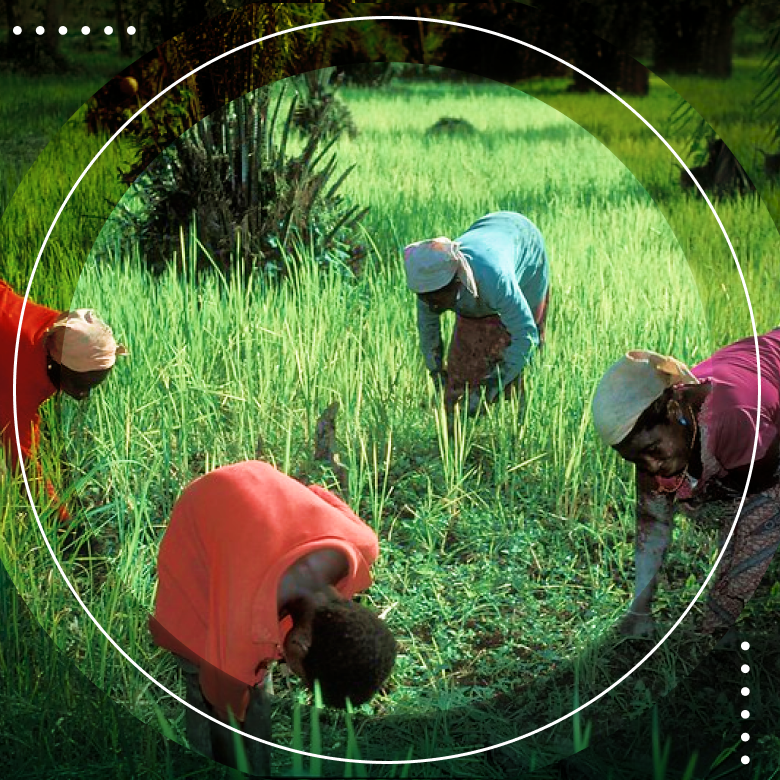The report indicates that significant efficiency gaps exist in nearly every country in the world. Closing these gaps can address many of the world’s pressing economic and environmental problems—economic productivity, health, food and water security, and climate change. The following is a summary of the key results:
- Key finding 1: Significant efficiency gaps exist in the use of land in countries at all income levels and in all regions. For most low-income countries, significant increases in net economic returns are possible without sacrificing environmental quality. In fact, there are opportunities to improve both economic output and environmental outcomes in most countries. On average, countries can almost double their performance in terms of either economic returns or environmental outcomes by improving on one dimension without a sacrifice in the other outcome.
- Key finding 2: More efficient use of land could sequester an additional 85.6 billion metric tons of carbon dioxide equivalent with no adverse economic impacts. This outcome is equivalent to around two years of global emissions at current rates and would give the world much-needed time to decarbonize before atmospheric greenhouse gas (GHG) concentrations reach critical levels. Because most tropical low-income countries have a comparative advantage in sequestering carbon through forests, they gain significantly more than any other group of countries from policies that reward land-based GHG sequestration initiatives.
- Key finding 3: Better allocation and management of land, water, and other inputs could lead to increases in agriculture, grazing, and forestry annual income by approximately US$329 billion—and enough food production increases to feed the world until 2050—without net loss of forests and natural habitats. Global populations are expected to reach 10 billion by 2050, and more food will be needed to meet global demands. Better cultivation strategies that close yield gaps, along with smarter spatial planning, can reduce the land footprint of agriculture while increasing global calories produced by more than 150 percent.
- Key finding 4: Existing policies for reducing air pollution and the resulting mortality could be achieved with a 60 percent cost saving. The 63 countries examined for air quality spent a total of US$220 billion—0.6 percent of their collective gross domestic product—on air pollution controls per year. These expenditures prevented 1.9 million premature deaths per year. If more economically efficient policies were adopted, the same results could be achieved at an even lower cost—only US$75 billion, or less than US$40,000 per life saved.
- Key finding 5: More efficient air pollution policies could have saved significantly more lives with the same level of spending. Had countries spent the same amount of money to abate particulate matter but implemented the most efficient policies instead of the abatement policies they actually implemented, they would have prevented an additional 366,000 premature deaths each year—a 20 percent improvement over the current level of avoided premature deaths.
- Key finding 6: Although richer countries are more efficient at abating air pollution, there are examples of good performers and underperformers across all income groups. Most high-income countries perform relatively well in terms of pollution abatement and, consequently, reducing negative human consequences, but being a high-income country does not automatically ensure good performance.
No one-size-fits-all solution exists, given the differences in endowments, needs, and capacities among countries. Instead, this report identifies what changes are needed and where these changes need to occur in a country. It also develops a policy filter for choosing the most appropriate policy mix for the country. The result is a detailed roadmap that can assist in the selection of approaches that are most feasible and affordable in each country. The report also drills down into specific country examples of priority reforms to illustrate how to put these tools into action.
Given countries’ competing needs and stretched budgets, tackling inefficiencies remains among the more cost-effective and economically attractive ways to achieve global sustainability goals. As global populations expand and the climate changes, pressures on common property natural resources will inevitably escalate, and economic consequences will worsen. This report demonstrates that there are significant opportunities for using the world’s scarce and valuable natural capital more efficiently. Although the approach outlined in this report will entail demanding policy reforms, the costs of inaction will be far higher.




